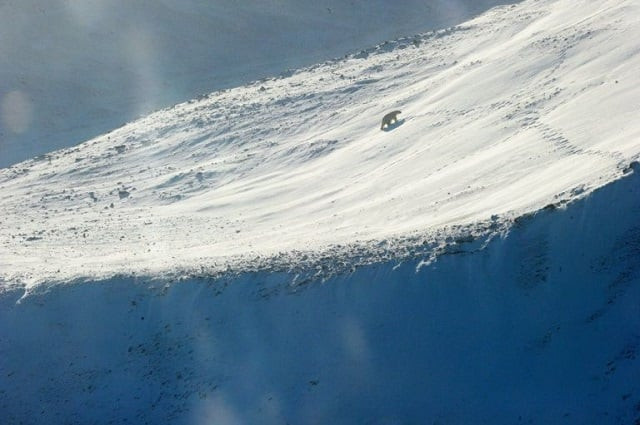Micro plastics in Arctic snow point to widespread air contamination
These particles defined as shreds which can cause serious health hazards, reveals research

In this file photo taken on September 25, 2015 a polar bear is seen on Griffith Island, in the Canadian High Arctic. PHOTO: AFP
Every year, several million tons of plastic litter course through rivers and out to the oceans, where they are gradually broken down into smaller fragments through the motion of waves and the ultraviolet light of the sun.
The new study, conducted by scientists at Germany's Alfred Wegener Institute and Switzerland's Institute for Snow and Avalanche Research, found that micro plastic particles can be transported tremendous distances through the atmosphere.
These particles, defined as shreds less than five millimeters in length, are later washed out of the air by precipitation, particularly snow.
"It's readily apparent that the majority of the micro plastic in the snow comes from the air," said Melanie Bergmann, lead author of the paper published in Science Advances on Wednesday.
Oceans act as lungs of the planet, says CNS
Bergmann and her colleagues used an infrared imaging technique to analyze samples collected between 2015 and 2017 from floating ice in the Fram Strait off Greenland, visiting five floes by helicopters or dinghies.
They then compared these with samples taken from remote Swiss Alps and Bremen in northwest Germany.
Concentrations of the micro particles in the Arctic were significantly lower than in the European sites, but still substantial.
The team's hypothesis for airborne transportation builds on past research conducted on pollen, where experts confirmed that pollen from near the equator ends up in the Arctic.
Similarly, dust from the Sahara desert can cover thousands of kilometers and end up in northeast Europe.
Bergmann said little work had been done to determine the effects of exposure to these particles.
"But once we've determined that large quantities of micro plastic can also be transported by the air, it naturally raises the question as to whether and how much plastic we're inhaling," she said, stressing the need for urgent research into the effects on human and animal health.

















COMMENTS
Comments are moderated and generally will be posted if they are on-topic and not abusive.
For more information, please see our Comments FAQ